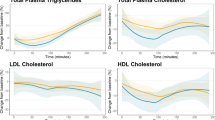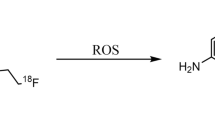Abstract
Ischemia can cause release of adenosine and purine catabolites from the heart, through the breakdown of ATP. If repeated periods of ischemia are induced, the efflux of purines is markedly reduced, although it is not clear if this is beneficial for the long-term survival of the heart. We have investigated changes in high-energy phosphates and purine release in the isolated perfused rat heart using31P NMR spectroscopy and high-performance liquid chromatography. Hearts were subjected to one of the following protocols: Group A—1 min of total global ischemia (TGI) after 40 min, 60 min, and 85 min of perfusion (a total of 3 × 1 min ischemia); Group B—1 min of TGI after 40 min of perfusion, 10 min of TGI after 50 min of perfusion, and a final 1 min of TGI after 85 min of perfusion. The profile of high-energy phosphate metabolites, Pi accumulation and purine release was similar for each 1-min period of TGI in Group A, whereas phosphocreatine content was increased and ATP content reduced by an extended period of TGI in Group B, leading to a less severe acidosis and purine efflux in the final 1 min of TGI at 85 min of perfusion. In conclusion, the reduced purine release observed in Group B may be related to the preischemic ATP pool size and accessibility and the increased myocardial energy reserve in the form of phosphocreatine.
Similar content being viewed by others
References
Nees S, Herzog V, Becker BF, Bock M, Des Rosiers Ch, Gerlach E (1985) The coronary endothelium: a highly active metabolic barrier for adenosine.Basic Res Cardiol 80: 515–529.
Bailey IA, Seymour A-ML, Radda GK (1981) A 31P-NMR study of the effects of reflow on the ischemic heart.Biochim Biophys Ada 637: 1–7.
Smolenski RT, Simmonds HA, Garlick PB, Venn GE, Chambers DJ (1993) Depressed adenosine and total purine catabolite production in the post-ischemic rat heart.Cardioscience 4: 235–240.
Reimer KA, Jennings RB (1992) Preconditioning. InMyo-cardial Protedion: The Pathophysiology of Reperfusion and Reperfusion Injury (Yellon DM, Jennings RB, eds.) pp. 165–183. New York: Raven Press.
Smolenski RT, Lachno DR, Ledingham SJM, Yacoub MH (1991) Determination of sixteen nucleotides, nucleosides and bases using high performance liquid chromatography and its application to the study of purine metabolism in hearts for transplantation.J Chromatogr 527: 414–420.
Author information
Authors and Affiliations
Rights and permissions
About this article
Cite this article
Smolenski, R.T., Yacoub, M.H. & Seymour, AM.L. Reduced purine catabolite production in the postischemic rat heart: a31P NMR assessment of cytosolic metabolites. MAGMA 2, 417–420 (1994). https://doi.org/10.1007/BF01705287
Issue Date:
DOI: https://doi.org/10.1007/BF01705287




